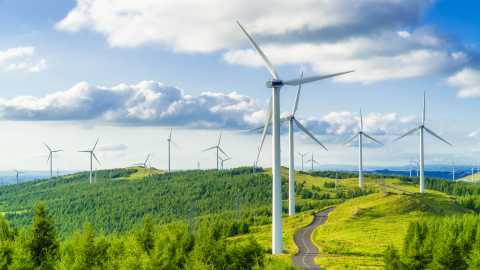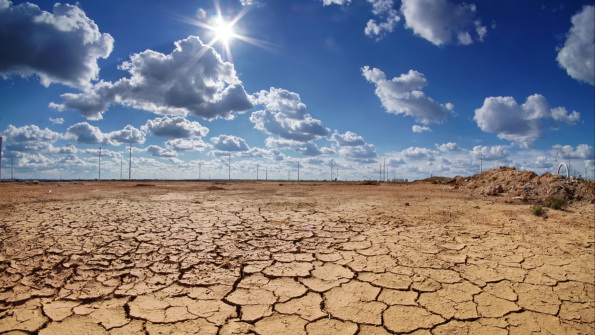
From energy-saving refrigerators, low-consumption automobiles, and intelligent building management systems to resource-saving production processes in industry, energy efficiency is a versatile topic that is – and will remain – of great importance in all areas of our everyday lives. Energy-efficient action is one of the most important global challenges and opportunities to slow down climate change, protect the environment and create sustainable solutions for future generations, today and in the future. Learn what exactly defines energy efficiency and how it’s calculated, what role energy efficiency classes play and what contribution Infineon is making already.
Energy Efficiency #DiscoverInfineon
What is energy efficiency?
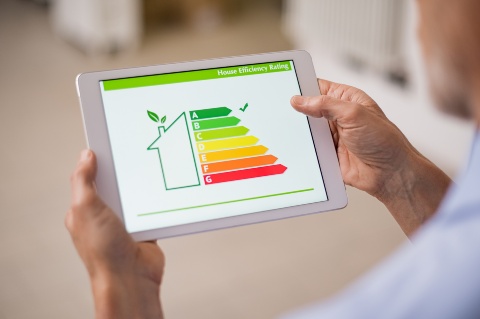
Energy efficiency means using available energy to achieve a specific benefit in a resource-conserving manner and at low cost. The energy required to achieve a benefit is the benchmark. Using benchmarks of household appliances in the EU such as refrigerators, the EU energy label illustrates energy efficiency and is easily understandable for consumers: colored energy efficiency classes mark the real energy consumption and communicates it clearly. This provides better orientation when comparing and purchasing household appliances.
The theory behind this is easily explained: the less energy an appliance requires for its operations, the higher its energy efficiency. If something is energy-efficient, it is also economical – because it saves resources such as electricity, fuel or heat by making optimum use of energy and reducing energy losses. For these reasons, energy efficiency is becoming increasingly important for society, politics and the economy.
How energy efficiency is calculated
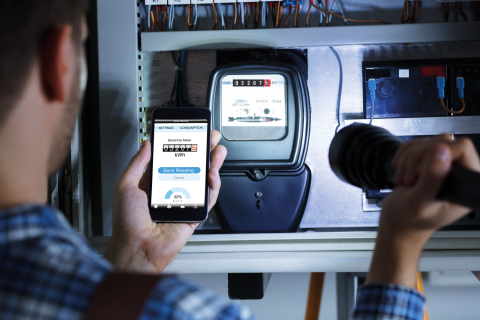
Energy-efficient technologies are future-oriented – but how can we calculate the actual efficient use of energy in each context? Depending on the type of use, various parameters are determined as a benchmark and compared in special comparison tables and reference models. For apartments and houses, these parameters are, for example, the living space in square meters, the type of heating and the annual consumption in liters and kWh. When calculating the energy efficiency, the energy input is primarily considered. This is indicated as energy efficiency index: The smaller it is, the more efficient.
In this comparison, passive houses perform significantly better than average residential buildings, as they get along almost without active heating systems and cover their energy requirements mainly from passive energy sources such as the sun. On the other hand, when calculating the energy efficiency class of an electric vehicle, the benchmark is based on parameters such as the respective CO2 emissions in relation to the weight.
Energy efficiency classes explained
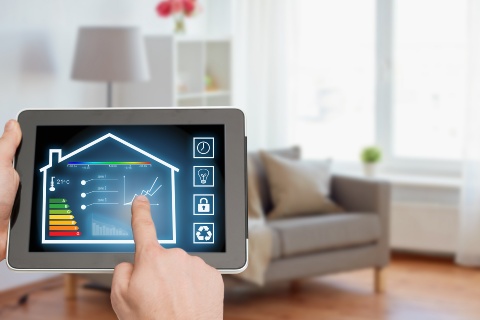
Whether buying a car, a property or a household appliance: consumers in the EU are usually guided by the respective energy efficiency class (EEK) and use it as an important aid in their decision-making. It is shown on a scale with colored bars, for example ranging from A (green) to G (red). In the EU, the specification of the respective class for household appliances has been mandatory by law since the 1990s and must be indicated with the EU energy label. But is it worth comparing the energy efficiency classes and the usually higher investment for a better classification?
Definitely! Because the energy efficiency classes are determined on specific parameters depending on the use and object. Based on this, the results can be compared optimally and ensure transparency. In many areas, information on this is so important that it is not only demanded by consumers, but also by politicians. This is particularly beneficial because it means that the definition of an energy efficiency class A or B is not just left to the control systems of manufacturers and interest groups, but a generally valid basis is created which consumers can rely on. It also guarantees fair competition – especially when it comes to achieving a better energy efficiency class on the scale.
Energy efficiency examples

For a long-term and sustainable investment, energy efficiency classes are usually a reliable guide for decisions. Due to a stronger environmental awareness as well as the desire for sustainable solutions, their importance for consumers and companies has increased in recent years. In private and economic sectors, energy efficiency also plays an important role in the field of renewable energies. The following three industrial and daily examples of energy efficiency help explain which parameters are essential to determine the energy efficiency class and what the best solution for the development around the energy efficiency class looks like.
Energy efficiency in cars
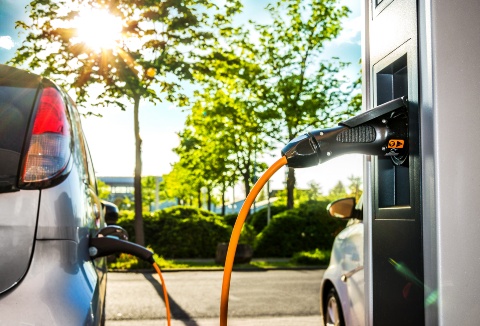
Since 2011, the CO2 label is mandatory information in the EU for dealers and manufacturers, clearly displaying fuel and energy consumption together with the car's energy efficiency class. This is classified on a scale from A+ (low CO2 emissions) to G (high CO2 emissions). However, when comparing cars, buyers tend to compare apples with oranges. At first glance, for example, a heavy SUV has the same classification as a compact car. Both vehicles are in the green area – but only in comparison with models that have similar CO2 emissions, which takes their mass or weight into account. An SUV naturally consumes more energy than a compact car – but can end up in the green area when compared to other models of its size. So, when making a quick comparison, keep in mind that the values are in relation to the individual weight.
Still, CO2 labels are usually determined by the manufacturers under ideal conditions. Thus a clear indication is not always apparent. The level of pollutant emissions in the form of particles and nitrogen oxides is also often unclear. Yet one thing is certain: driving a car with high energy efficiency reduces harmful emissions, protects the environment in the long term and saves costs.
When it really comes to minimizing CO2 emissions, the energy efficiency of an electric vehicle is a leading-edge alternative. From small to large vehicles, battery-powered systems are already enabling emission-free driving mobility. In the future, the further development of corresponding technologies and semiconductor solutions is key, and this is where Infineon has been involved since the start of electromobility. Technologies by Infineon, for example, enable the electricity from a battery to be converted into motion. Energy efficiency is increased – and the more efficient the conversion of energy between battery and motor is, the greater the range becomes when driving. Infineon technologies and semiconductor solutions are also already playing a significant role in the speed and infrastructure of battery charging systems.
Energy efficiency of household appliances
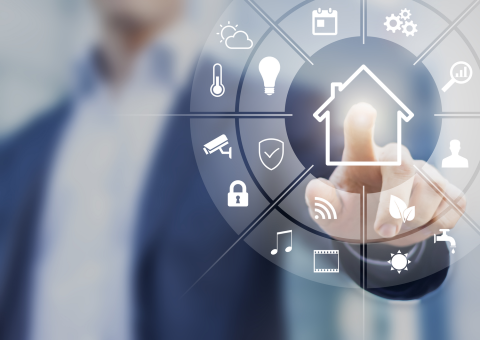
The energy consumption of household appliances is one of the most important cost and environmental factors for the energy consumption in one's own four walls – whether it’s the washing machine, dryer, refrigerator, dishwasher, cooking hood or television. After all, people use many appliances every day and, especially when it comes to the energy efficiency class of a refrigerator or washing machine, it is not uncommon to decide for the best one. In addition, digital solutions such as intelligent smart home systems that enable more efficient energy use are an increasingly important decision criterion. You can read more about this in our article, "Smart home: Everything you need to know."
The potential savings from better energy efficiency are particularly high for dryers and dishwashers. If you replace an old dryer model with the energy efficiency class G with a newer model with energy efficiency class B, you can achieve an annual reduction in electricity costs of up to 70%. If you convert this reduction into euros, it results in a saving of over 100 euros. The potential for dishwashers is also great: when replacing an old model with energy efficiency class G with a newer model with energy efficiency class B, you can save up to 30% on electricity costs each year – the equivalent to over 20 euros. Another decisive advantage here is also the significantly lower water consumption.
Energy-efficient buildings

Since 2014, an individual energy certificate in the EU has indicated the energy efficiency class of a building on a scale from A+ (very energy-efficient) to H (not energy-efficient). The energy certificate has been mandatory for sellers or landlords since 2009 and offers interested parties a clear overview for comparison at the latest during the viewing. For the determination of the energy efficiency class of a house e.g. the installation engineering, thermal insulation and building tightness are important. If the energy consumption in the evaluation is less than 30 kWh per square meter per year, the grade is A+, and if it is more than 250 kWh per square meter per year, the grade is H. Based on this, the approximate energy costs per square meter of living space can also be determined economically.
With energy conservation-focused renovations, efficiency can be increased and a better economic value can thus be achieved in addition to improved living and quality of life. However, there is enormous potential for optimization here, especially regarding environmental factors – because building systems are currently responsible for 40% of energy consumption and 36% of CO2 emissions in the EU alone.
In addition to renovations, concepts for smart buildings and smart maintenance, such as predictive maintenance, are solutions geared for the future of sustainable energy supply. With the help of interconnected sensors, smart buildings can reduce their energy consumption by around 30%. And with both smart and predictive maintenance, repairs and maintenance work can be integrated into the regular operation of a smart building. In both areas, Infineon offers pioneering solutions and is continuously working on the further development of its portfolio for intelligent building applications, and together with smart servicing, these ensure a significant reduction in energy consumption and a reduction in CO2 emissions – and thus also a sustainably better climate.
Energy efficiency in industry
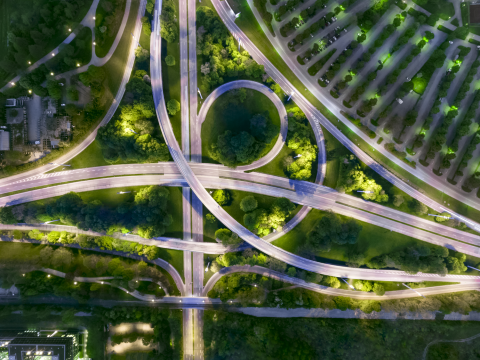
In the future, there will be no way around "green" products, environment friendly business practices and digital solutions. Customers and politicians worldwide are demanding improvements. For years now, industry has been gearing up to use energy efficiency and ecology to drive innovations and remain competitive.
Beside product development, energy-efficient automation is a key driver for sustainable solutions and lower CO2 emissions. From basic materials to energy, the use of resources is optimized through digital applications and becoming increasingly efficient. Analytics, predictive maintenance and automatic updates enable more while consuming less.
Infineon offers a broad portfolio of semiconductor solutions and is developing new approaches to increase the value and intelligence of processes in industry – from energy generation to transmission, storage and consumption. Discover how and in which fields Infineon has been making green energy possible with energy-efficient solutions for over 40 years: "Energy efficiency – Making green energy happen".
Policies and promotions
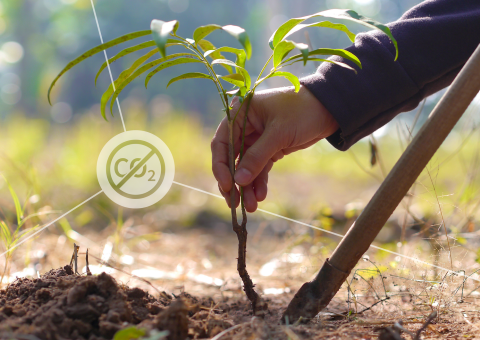
To promote ecological development in the industry and private sector, far-reaching laws have been drafted and promotions initiated. The focus is on overarching strategies that also place climate change and environmental protection at the center of their primary objectives in addition to economic interests. One example is the European Green Deal, which sets out the European Union's goal of making Europe the first continent to achieve climate neutrality by 2050 and reducing greenhouse gas emissions by at least 55% by 2030 in comparison to those of 1990. The EU's package of energy efficiency policies is the European response to the international Paris Climate Agreement and was agreed upon in December 2019. It includes far-reaching measures in areas such as energy, transport and industry.
The German government's Climate Change Act sets even stricter policies on a national level: For example, Germany is to be climate neutral by 2045 and reduce its greenhouse gas emissions by 65% – 5 years earlier and 10% more than agreed upon in the European Green Deal. To promote these goals, an 8 billion euro emergency program has been adopted, which promotes climate-friendly mobility and sustainable forestry and agriculture amongst others. In addition, there are a wide range of opportunities with the federal promotion of efficient buildings (BEG) and other promotion offers for homes, companies and municipalities.
Energy efficiency promotions at a federal level are also available through the Renewable Energy Sources Act (EEG) for the expansion of renewable energies. Since it came into force in 2000, it has been continuously developed to flexibly adapt in the interests of climate and environmental protection.
Challenges and future of energy efficiency
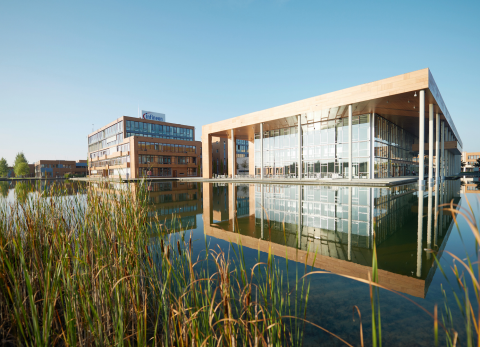
On an economic and private level, topics related to energy efficiency are bound to face financial challenges in the future. Consumers are often confronted with higher acquisition costs for sustainable solutions, for which subsidies and bonuses in areas such as buildings and electromobility are already of fundamental importance. Above all, companies are concerned about global competition. As a result, many companies do not yet see sustainable action as a business objective, but rather as part of their social responsibility – even though sustainable business models not only protect the environment but can also reduce production costs and create new "greener" products that can put them one step ahead of the competition.
To tackle climate change, there is no alternative to sustainable development and lifestyles for both private consumers and businesses. Even today, the consumption of energy is greater than supplied from new sources – and the trend is rising. To make progress towards energy-efficient solutions and secure energy supplies for future generations, the commitment of society as a whole, the courage of companies and the support of governments around the world are critical keys to success. To learn more about sustainability and responsibility towards society and the environment at Infineon, please visit the page "Sustainability at Infineon".
Last update: February 2022
